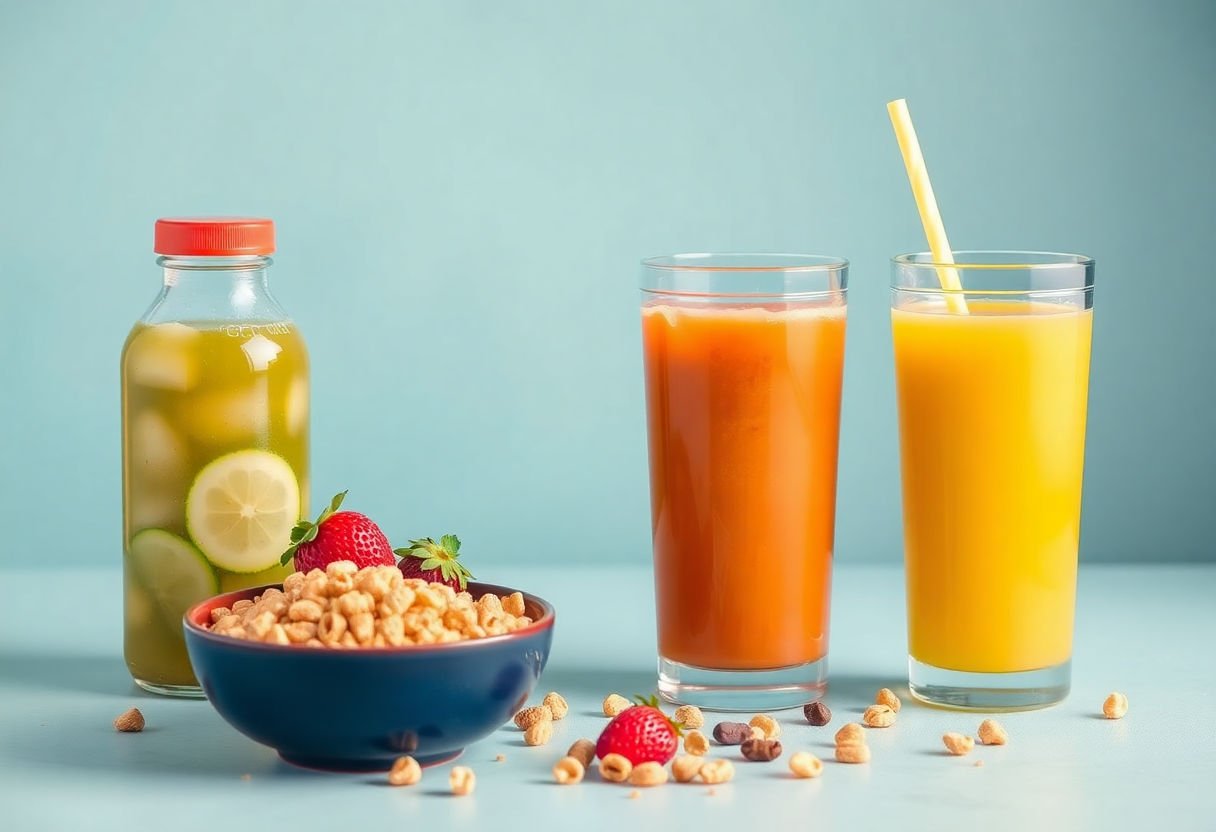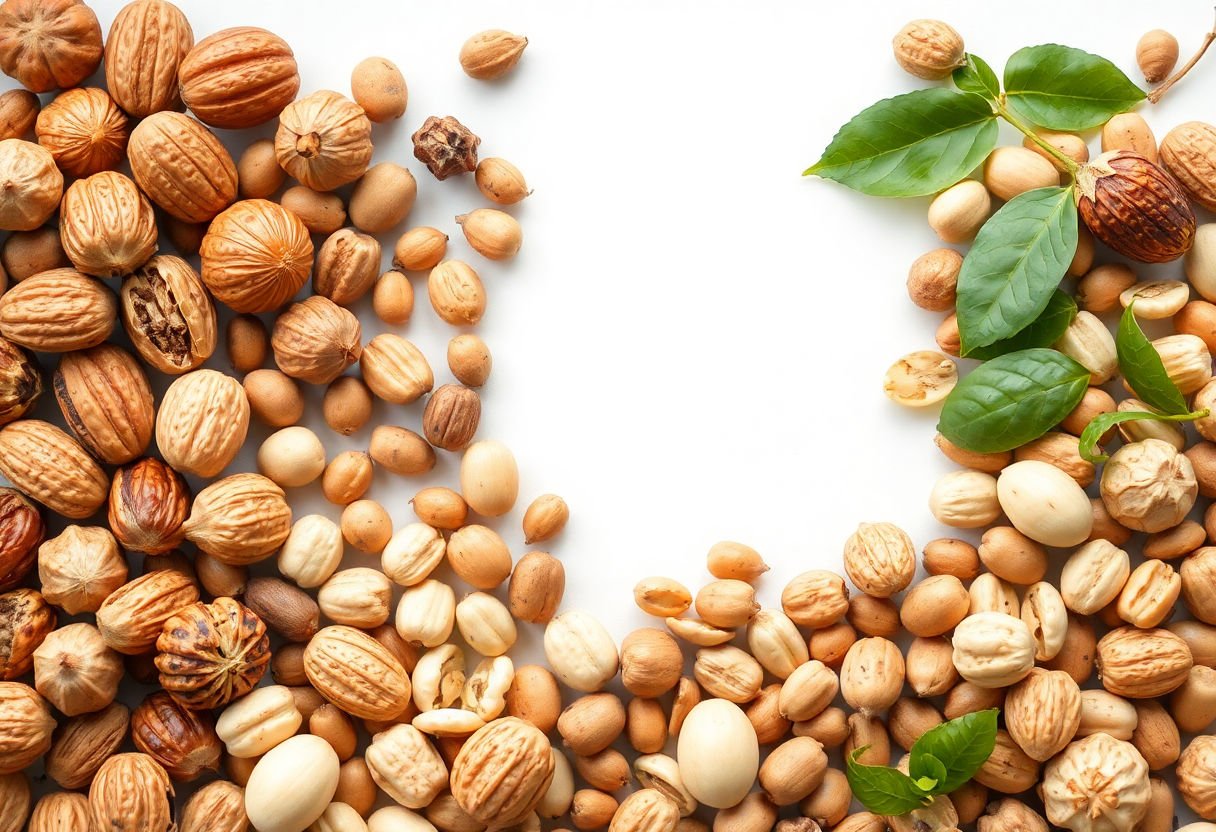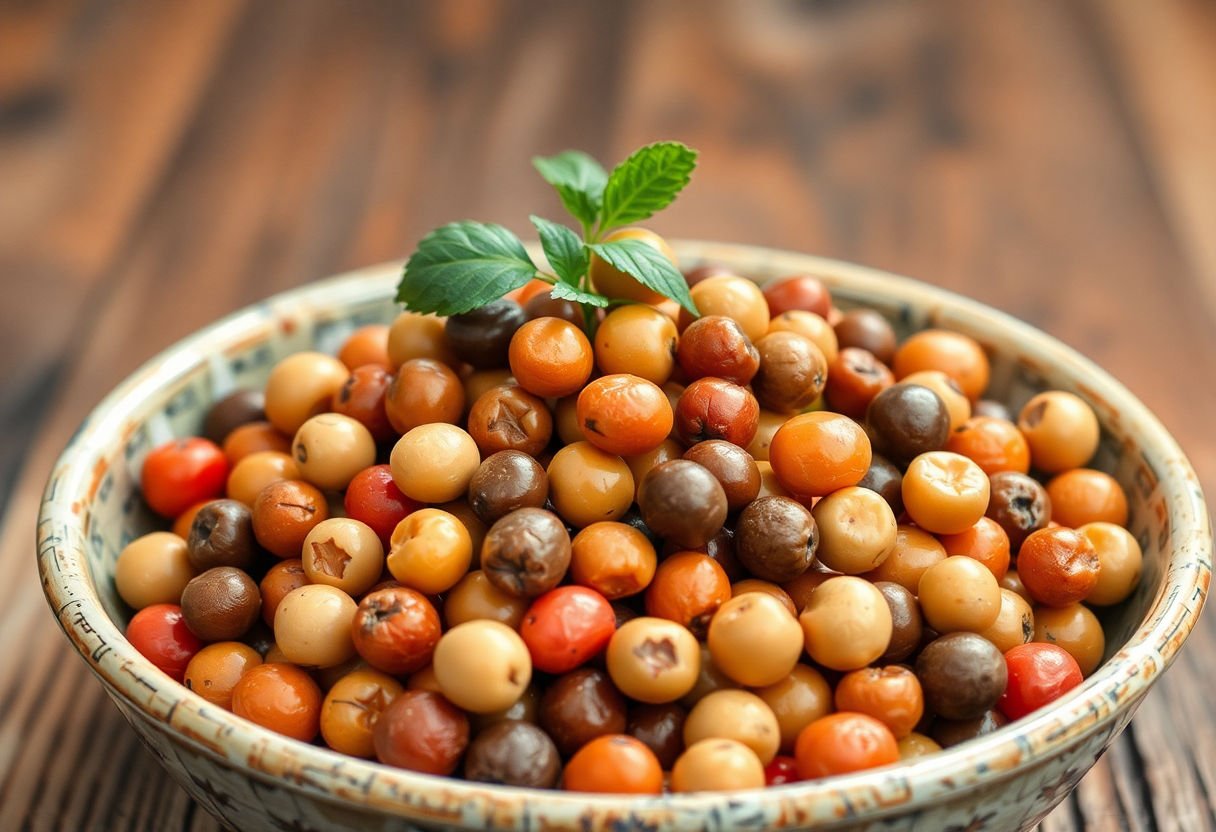Calcium plays a big role in your child’s health. It helps bones grow strong and supports overall wellness. As a parent, finding foods that provide calcium is important. Common options include dairy products like milk and yogurt. Green vegetables such as spinach and broccoli also offer great benefits. You can discover fortified foods and tasty nuts and seeds as well. Don’t forget about fish and legumes; they can surprise you with their calcium content. This guide will help you make healthy choices for your child’s daily meals. Let’s explore the best options together.
Key Takeaways
- Dairy products like milk, cheese, and yogurt are excellent sources of calcium for kids.
- Leafy green vegetables such as spinach and kale add calcium and nutrients to meals.
- Fortified foods can provide extra calcium to children’s diets.
- Nuts, seeds, and legumes also offer calcium and other essential nutrients.
- Fish and seafood, especially with edible bones, are natural sources of calcium and healthy fats.
Dairy Products

Dairy foods like milk, cheese, and yogurt are major sources of calcium for kids. They help build strong bones and teeth.
Milk is a favorite among children. It is rich in calcium and vitamins A and D. An 8-ounce glass gives nearly 300 mg of calcium. That’s a big step towards the daily goal. Use it in cereals, smoothies, or as a drink.
Cheese makes meals tasty. It also supports bone health with its calcium content. Mozzarella, cheddar, and Swiss are great choices. A slice of cheese can hold about 200 mg of calcium. Think about adding cheese to sandwiches or pasta.
Yogurt offers a creamy way to add calcium to a child’s diet. One cup of yogurt has nearly 400 mg of calcium. Yogurt also has probiotics, which are good for digestion. Add some fruits or nuts for flavor.
These dairy foods can be part of breakfast, lunch, or snacks. They give regular and easy calcium to kids, helping them grow strong. If a child has trouble digesting lactose, try lactose-free options or products with added lactase enzymes.
Leafy Green Vegetables
Leafy green vegetables are a great source of calcium for kids. Think of them as nature’s way of putting milk in a leaf. Spinach, kale, and broccoli are the stars here. They pack a punch of nutrients along with calcium.
Spinach might not be every kid’s favorite, but there’s a trick. Sneak it into smoothies. The taste hides behind fruits like bananas or berries. Add a handful, blend it up, and you’ve got a healthy drink.
Kale is another powerhouse. Try tossing it with olive oil and baking it to make kale chips. Kids love crunchy snacks. These chips can turn an ordinary snack time into a delight.
Broccoli offers a great crunch and a mild taste. Pair it with cheese or dip it in hummus. Melted cheese on broccoli works wonders. This could make a picky eater’s eyes light up.
Here’s a fun fact: leafy greens not only help bones but also aid in better digestion. This is a bonus for growing kids.
To summarize:
- Spinach: Best blended in smoothies.
- Kale: Bakes into chips. Crunchy and savory.
- Broccoli: Enjoy with cheese. Kid-friendly and tasty.
Encourage kids to try these greens. Sometimes, it just takes the right recipe to make them like it. Give it a try!
Fortified Foods

Fortified foods pack a punch when it comes to adding calcium to a kid’s diet. So, what are fortified foods? These are foods with added nutrients that might not be there naturally. For calcium, common fortified foods include cereals and juices.
Fortified Cereals: Start the day with breakfast cereals that have added calcium. Many popular brands offer this. You might find labels stating “calcium-enriched” on the box. This can make your mornings more nutritious. They usually come in different flavors. Some even add other vitamins and iron.
Fortified Juices: Many fruit juices add calcium to their product. Orange juice with calcium tastes just like regular orange juice but offers more nutrients. Kids might not realize the difference, but their bones will thank you.
Offering fortified foods gives another way to meet daily calcium needs without changing your child’s favorite meals. While natural sources like milk and greens offer plenty, fortified foods fill in the gaps. Always check the label to see what extra benefits the product offers.
Including fortified foods in your child’s meals can feel like hitting a home run in nutrition. A bowl of fortified cereal or a glass of fortified juice easily ups their calcium intake. Simple swaps like these keep kids healthy and growing strong.
Nuts and Seeds

Nuts and seeds hide a world of health benefits in small packages. Parents should think of them as tiny powerhouses. They pack a punch of nutrients, including calcium.
Almonds stand out with their rich calcium content. Just a small handful can make a difference. They can be a crunchy snack or an addition to oatmeal or yogurt. Almond butter on toast or with sliced apples also works well.
Chia seeds offer another great option. When soaked in liquid, these seeds expand and take on a gel-like texture. You can mix them into smoothies or make a pudding by combining them with milk and a little honey.
Sesame seeds might be tiny, but they are full of calcium. Sprinkle them on salads or mix them into stir-fries. They add both taste and texture.
For a change of pace, consider hazelnuts. They provide calcium and a delightful taste. Kids might like them in trail mix or ground into a spread.
Here are some simple ways to use nuts and seeds:
- Add almond slivers to cereal
- Blend chia seeds into a fruit smoothie
- Sprinkle sesame seeds on chicken or tofu
- Mix hazelnuts with raisins for a homemade trail mix
Parents can ensure their kids get some extra calcium by including these little gems. These choices not only support growing bones but add exciting flavors and textures to meals.
Fish and Seafood

Fish and seafood offer a great source of calcium for kids. Options like canned sardines or salmon with bones stand out. These bones, when soft and tiny, contain a lot of calcium. When your child eats these, they get a good amount of this vital mineral.
Fish isn’t just about calcium. It also has omega-3 fatty acids. These healthy fats help brain development and support heart health. For picky eaters, try fish tacos or fish sticks. These meals might mask the taste while providing nutrients.
If allergies aren’t a concern, shellfish adds variety to your child’s plate. For example, shrimp and crab packed with calcium. Plus, they bring other minerals like zinc and iron. These help the body in various ways.
Serving ideas can make fish appealing. Try adding canned salmon to a salad or making a tuna sandwich. You can stir fish into pasta or spread it on crackers, too. These methods make it easier to meet a child’s calcium needs while offering delicious meals.
Here’s a simple list of sea choices:
- Sardines: Soft bones are easy to chew.
- Salmon: Best eaten with bones for calcium.
- Shrimp: Quick to cook and full of flavor.
- Crab: Adds a special touch to many dishes.
Encourage this group of foods for their nutritional value. They aren’t just rich in calcium but also offer essential health benefits that every growing child needs.
Legumes

Legumes play a big part in providing calcium, especially for kids who do not consume dairy. Think of beans, lentils, and peas. These foods are great sources of plant-based calcium. They can be both tasty and healthy for young ones.
Beans like black beans and white beans pack a calcium punch. One way to make them appealing is to cook them in soups or mash them into spreads. You can add a spoonful of black beans into a taco or burrito. Kids might not even notice, but they will get more nutrition.
Lentils, those tiny legumes, also bring in good calcium. You can cook them in stews or make tasty patties. Red lentils cook faster and can blend into sauces or soups, making them a hidden gem in meals.
Chickpeas are another kid-friendly choice. They are the main ingredient in hummus, a popular spread. Serve hummus with carrot sticks or whole-grain crackers for a fun snack. Roasted chickpeas with light seasoning make a crunchy treat too.
These legumes serve as excellent snacks or meal ingredients. They add variety and provide calcium along with fiber and protein. This variety can help cover different tastes and preferences among children. Eating a range of foods can support children’s growth and keep their bones strong. Parents can feel confident adding these to their kids’ plates.
Conclusion
Calcium fuels kids’ growth and strength. From dairy products like cheese and yogurt to green vegetables like broccoli, options abound. Introduce fortified foods, sprinkle nuts and seeds, and offer fish and legumes to broaden their palate. The right foods ensure strong bones and vibrant health. Encourage diversity in meals. Experiment with recipes. Observe your child’s reactions. A balanced diet now means healthier steps tomorrow. Treasure these nutrition-packed choices for thriving little ones.
Frequently Asked Questions
What is the recommended daily intake of calcium for kids?
Children between ages 4 to 8 need about 1,000 milligrams of calcium daily. Kids aged 9 to 18 need around 1,300 milligrams each day. This helps support their growing bones.
How can parents include calcium in a lactose intolerant child’s diet?
Parents can use lactose-free dairy products or fortified alternatives like almond milk. Leafy greens and certain nuts can also serve as rich sources of calcium.
Are fortified foods a good choice for my child?
Fortified foods can help meet a child’s calcium needs. Look for fortified cereals or juices which often contain added calcium.
How do you prepare foods to keep calcium in them?
Cooking methods like steaming or baking help retain calcium. Avoid boiling foods like leafy greens, as boiling can reduce calcium levels.
Are there any fish high in calcium safe for children?
Yes, canned fish like sardines or salmon with bones provide calcium. Ensure the fish is easy to chew to prevent choking hazards.


